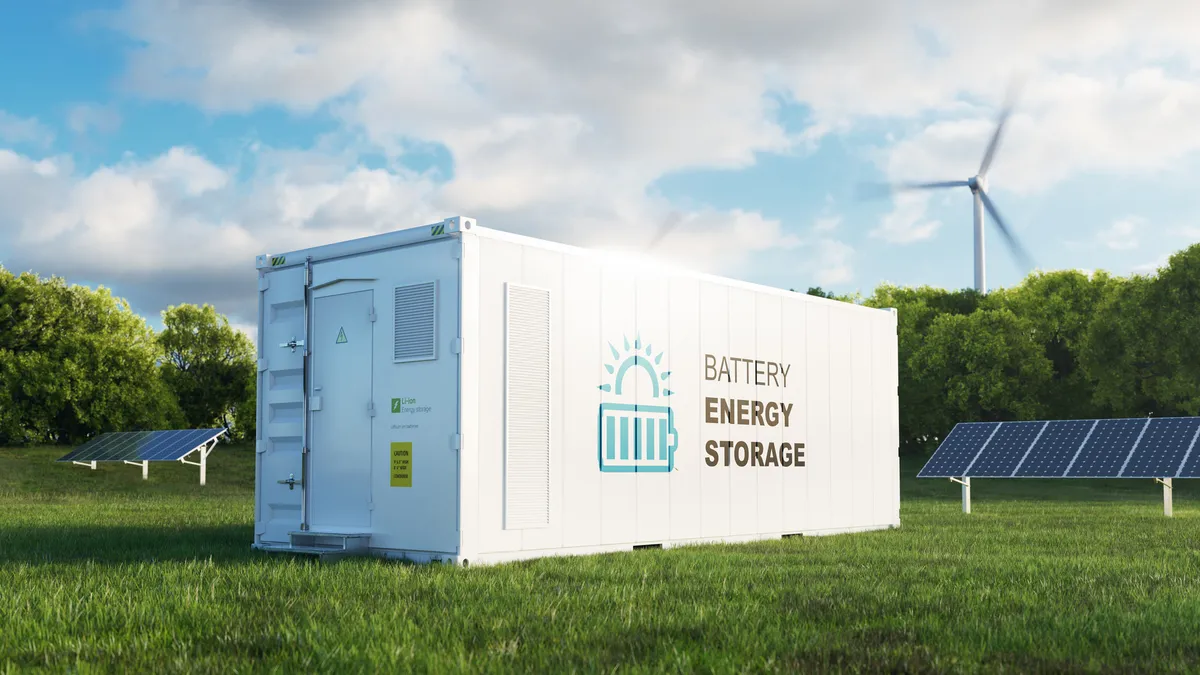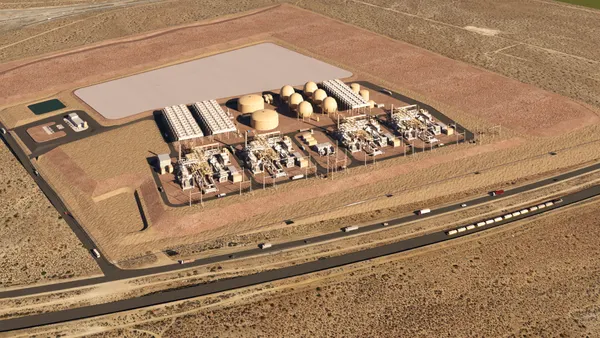Large-scale battery storage is expected to contribute 10,000 megawatts (MW) to the U.S. power grid by 2023, according to projections by the U.S. Energy Information Administration (EIA). That’s more than 10 times the capacity that was available just three years ago. But despite the bullish forecast, numerous misperceptions about the viability of utility-scale battery storage continue to persist in the industry.
Misperception 1 – The economics don’t work
Pilot projects are at the root of this misperception about return on investment (ROI), according to Laura Meilander, vice president of business development for energy storage company, Convergent Energy + Power (Convergent). “When utilities run the numbers on a pilot project, they often say it doesn’t pencil out,” she said. “That’s because economy of scale is needed to justify the fixed costs.”
The pre-development, interconnection and maintenance costs—as well as soft costs like personnel training—are the same, whether the utility builds a one MW pilot system or a 10 MW system. But with the larger the system, the ROI is much better, Meilander said. “For several reasons, it’s not prudent to do a small pilot program. It’s better to just go big and build something that’s economic.” In addition, new federal legislation will improve the economics of large-scale battery storage anywhere from 30-50 percent, Meilander said.
Misperception 2 – We don’t have the bandwidth
Some utilities are keenly aware that they don’t have the funds to cover the up-front costs of large-scale battery storage systems, or the human resources to develop and manage the operations and maintenance of the system. But building and owning a system isn’t the only way for a utility to realize the benefits. Instead, they can partner with a third-party provider.
A reputable energy storage company will have the expertise necessary to finance, engineer and build a system that meets the performance and economic needs of a utility. Depending on how the contract is structured, there can be very little risk to the utility. In fact, some providers use the same model that’s been successful in the solar industry, building, owning and managing systems for customers under a fixed contract fee. Shared savings agreements are another contract type, under which the vendor and the utility split the revenue generated by a system.
Misperception 3 – Batteries will be much cheaper in a few years
While it’s true the cost of batteries has dropped significantly with advances in technology and scaling of production, Meilander, who’s been in the utility industry for more than 20 years, said the steep drop appears to be over. “We saw double-digit decreases year on year over the past decade, but now those decreases are pretty minimal,” she said. “The chart looks like a hockey stick and BloomberNEF even reported upward pressure on costs in the near term.”
According to Meilander, “In the near term, with the supply chain issues, there has been upward pressure on prices, but we expect supply to catch up with demand and costs should remain level or slightly decrease.” However, that amount could be offset by the revenue earned from the battery system in the meantime, while also making progress on carbon and resiliency goals. “In short, it no longer makes sense to wait on further price drops, especially considering the supply crunch that’s affecting the industry.”
Misperception 4 – We don’t have the space for battery storage
Unlike solar or wind, battery storage does not require a lot of space. In fact, utilities often find they have enough space within existing fences at substations. “If not inside the fence, most sites have a grassy spot adjacent to the substation that works perfectly, because the square footage needs are minimal,” Meilander said.
The rule of thumb Convergent shares with its utility customers is that battery storage requires roughly 600 to 1,000 square feet per MW-hour of capacity. "So, if you have a 5MW, three-hour system, that's 15MW-hours," Meilander explained. "That would require 15,000 square feet at most, including all the space needed for transformers and auxiliary equipment."
Misperception 5 – Peak shaving requires a four-hour battery
Utilities often believe they need at least four hours of battery storage to effectively respond to peak demand, Meilander said. “I’m not sure where that’s coming from. But it isn’t true,” she added. “In fact, it doesn’t always pay off to get that fourth hour for just a minimal increase in peak response.”
Convergent uses forecasting algorithms to predict and analyze a utility’s peak demand and calculate the system size that will deliver the greatest ROI. “We're often going with three-hour systems—and potentially even two hours—instead of four-hour systems,” Meilander said. “The smaller systems won’t cover every peak, but that’s part of the calculation. It’s all about working with the utility to balance their performance and financial needs.”
Misperception 6 – Off-the-shelf batteries are the obvious choice
With the scaling of the battery storage industry in recent years, several manufacturers have made modular product offerings available. Before pandemic-related supply issues became a factor, the rapid availability of these battery packs made them a tempting choice for utilities developing storage. But even then, some utilities preferred to go with custom-built systems, according to Meilander.
Right sizing the system is the biggest advantage of customization. “An off-the-shelf product may come in only 2MW increments,” she explained. “But if the calculations show you need a 5MW solution, then you’re forced to go smaller and leave revenue generation on the table, or pay extra for an oversized system.” Meilander said a custom-built system is often the smart choice over the long run, especially considering the upheaval in today’s supply chain.
Misperception 7 – Batteries should be paired with solar
Yes, battery storage has an important role to play in making intermittent renewable energy a reliable grid solution. But utility-scale energy storage does not have to be paired with solar or wind power to provide utilities with economic benefits and emission reductions.
Battery storage charged from the grid allows utilities to leverage lower off-peak pricing. So if you have a three-hour battery, you might charge it for six hours overnight," Meilander explained. "Then discharge the battery during peak demand the next afternoon to hedge against market pricing." Utilities need to understand their exposure to market pricing to make it work, but if they contract for battery storage, the vendor will be responsible for putting together the most economical operating plan.
Apparently, more and more utilities are now overcoming the misperceptions listed above. The U.S. gained approximately 458 MW of large-scale battery storage in 2020 alone, according to the comprehensive market update published by the EIA in August 2021. That was more than double the amount of the previous record (222 MW) set in 2018. Yet, the agency says it’s just the beginning of an even larger surge expected over the next few years, especially considering the passage of new federal legislation addressing climate change.










